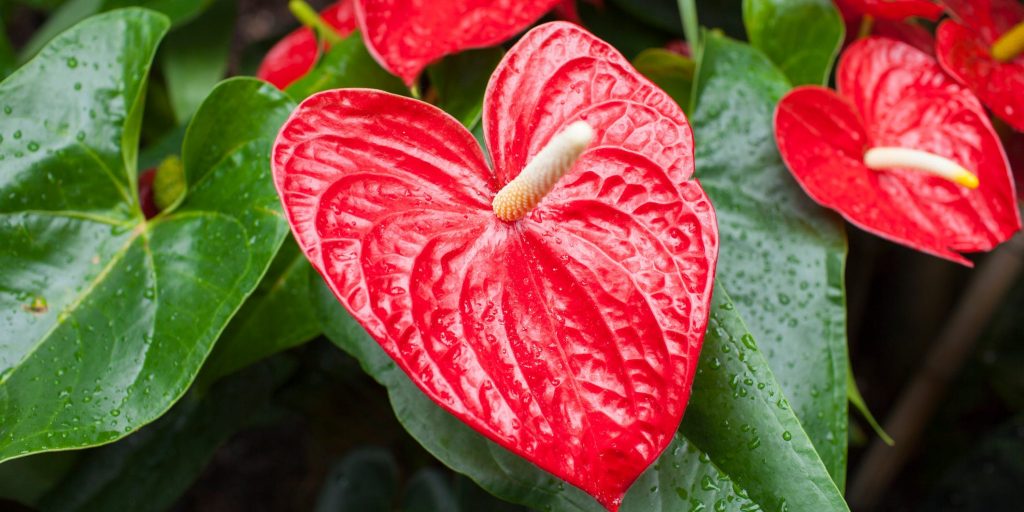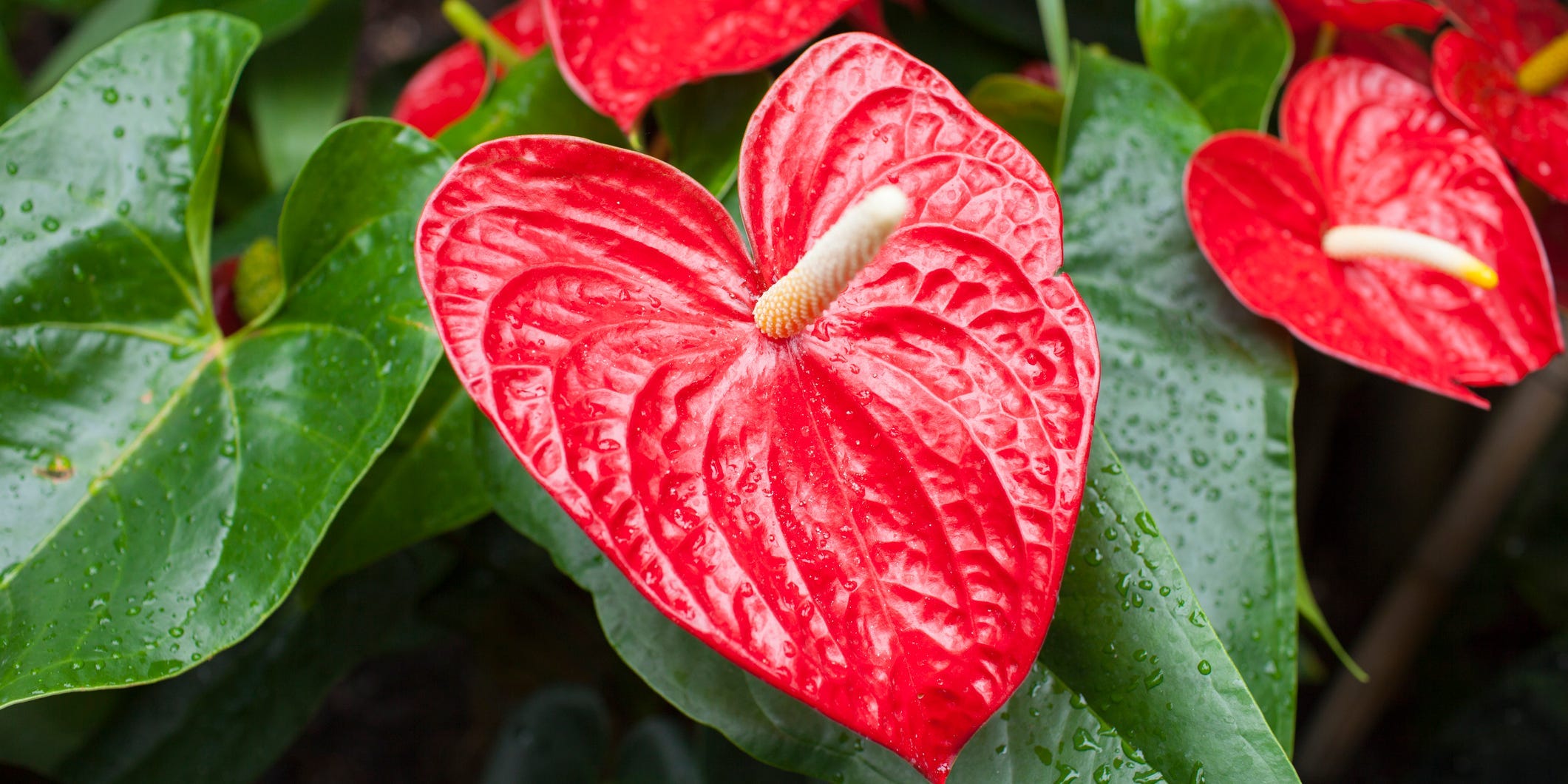
- Anthuriums have waxy, colorful leaves called spathes that look like flowers.
- As tropical plants, anthuriums prefer high humidity and a stable watering schedule.
- Because anthuriums are almost always in bloom, fertilizer is not usually required.
- Visit Insider's Home & Kitchen Reference library for more stories.
The bright and blushing anthurium plant is well-recognized among plant lovers as a flowering houseplant. This tropical plant, native to the Americas, is a showstopper with its waxy, heart-shaped leaves called spathes, that despite popular belief, aren't actually flowers at all.
Despite its high-maintenance look, the anthurium plant can be quite easy to care for with the right amount of attention.
Erin Marino, editorial lead and plant expert at The Sill, shares her best tips on how to keep the charming anthurium plant looking like a fresh, colorful bouquet year-round.
Common anthurium varieties
Anthuriums are part of the Araceae family, the same as monsteras, philodendrons, pothos, and calla lilies. The genus Anthurium is the largest in the Araceae family, containing about 1,000 species of plants.
"Many species of Anthurium are grown as ornamental plants," says Marino. "Among the most popular species are Anthurium crystallinum and Anthurium clarinervium, but the hybrid species Anthurium andraeanum and Anthurium scherzerianum are the most common with colorful spathes referred to as flamingo flowers."
Water
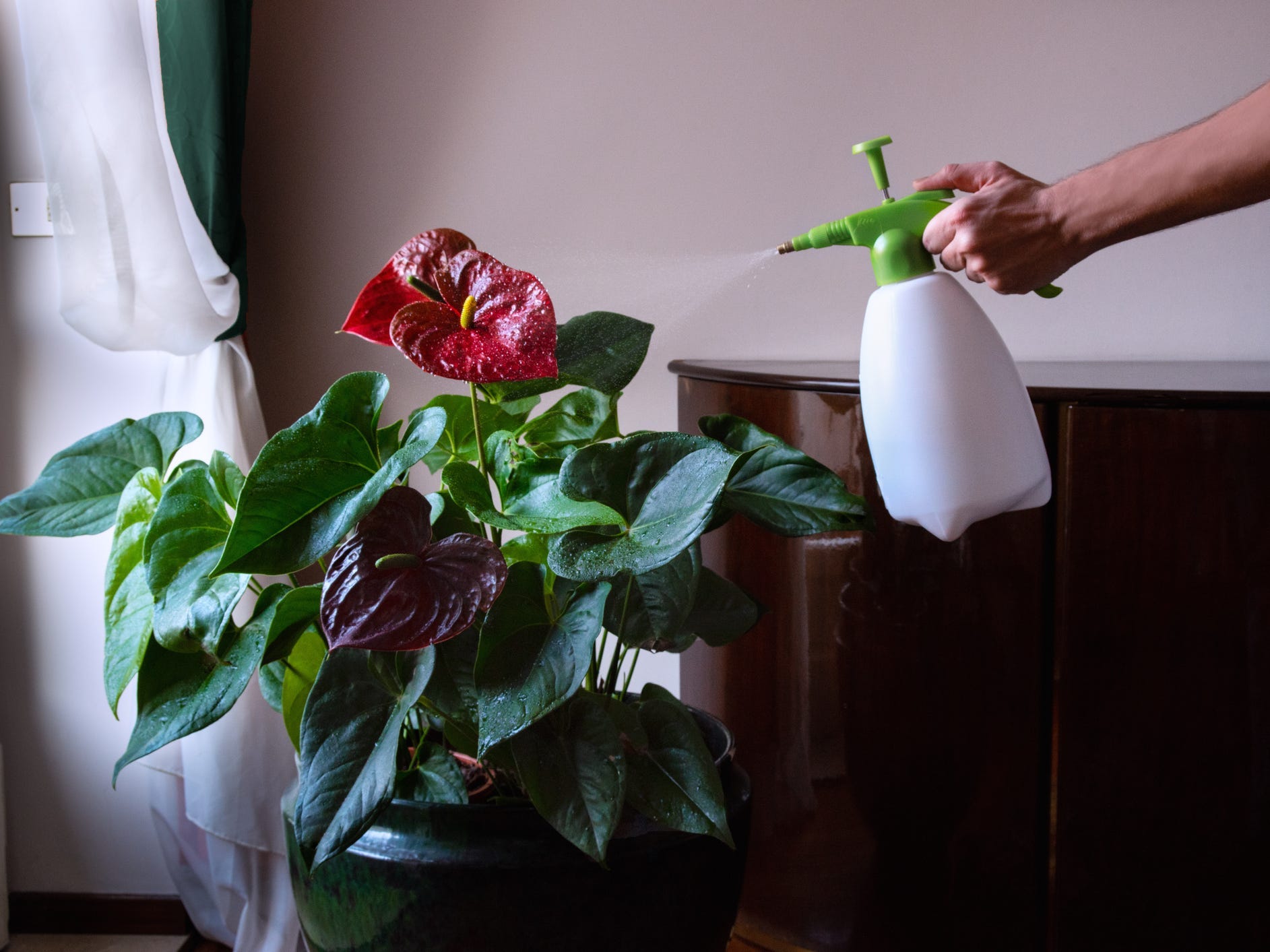
While anthuriums prefer a humid environment due to their topical origins, they only need to be watered once a week or so because their fleshy roots can easily become waterlogged. To maintain a good level of humidity and prevent overwatering, Marino recommends a humidifier while keeping a consistent weekly watering schedule.
"Anthuriums can benefit from increased humidity. If you have a humidifier at home, keep it close by, or add a pebble tray with water under the planter," says Marino. "You can grow anthuriums with regular indoor humidity but, being a tropical plant, increased humidity will help it thrive indoors."
Potting and fertilizer
Anthuriums prefer a coarse potting mix, similar to orchid mix which typically contains thick pieces like pine bark. This mix allows the plant to avoid sitting in soggy soil.
"A well-draining, airy indoor potting mix will do," says Marino. "Avoid moisture-retention mixes that can lead to overwatering and root rot."
Fertilizer for anthuriums isn't always necessary — since these plants are almost always in bloom — especially in non-growing seasons when fertilizer can damage the roots.
However, a proper fertilizing schedule for an anthurium is once a month in the late spring and summer. It is also best to choose a fertilizer high in phosphorus (the middle number of the three on the label) diluted to one-quarter strength.
Light and temperature
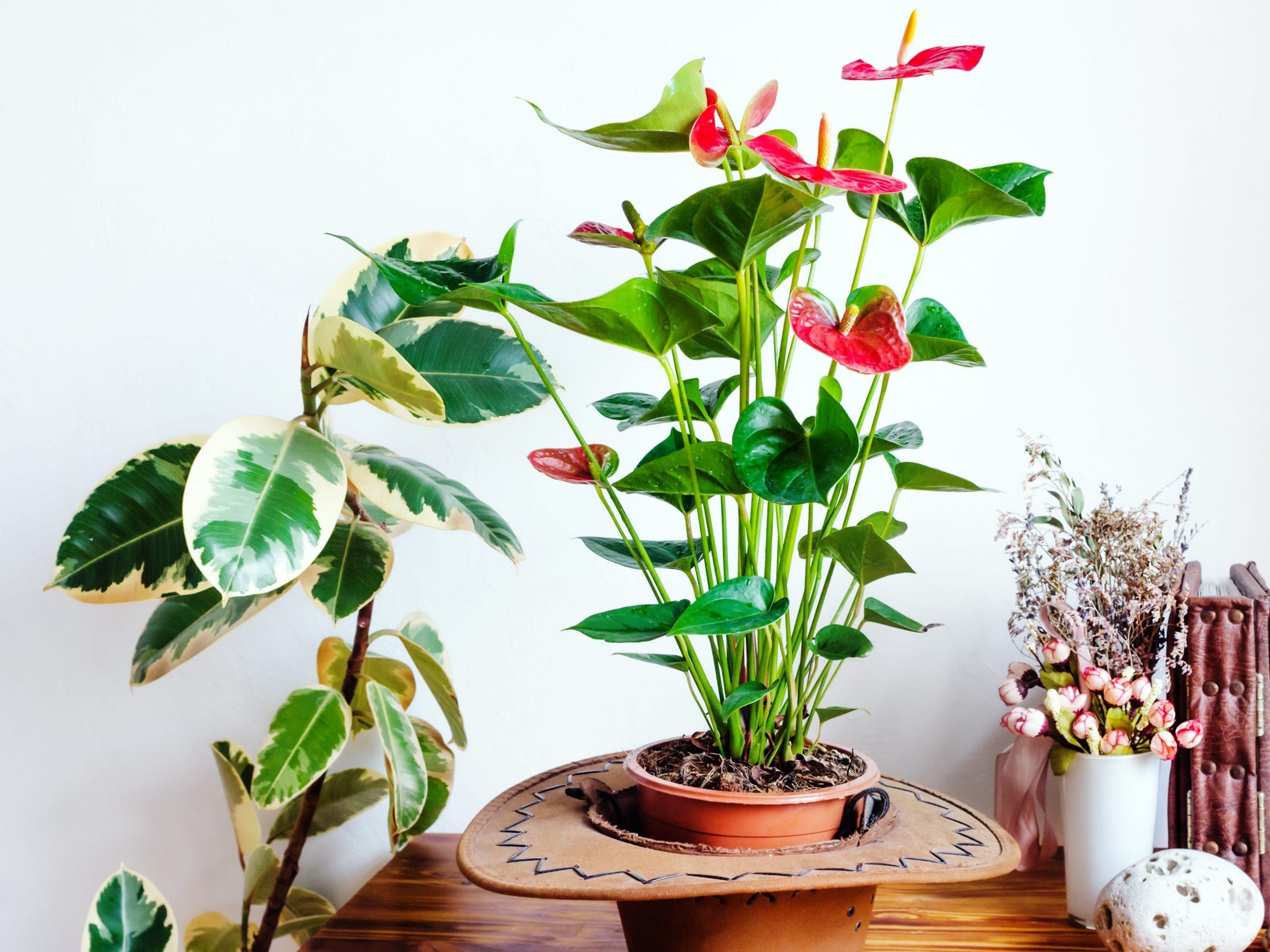
Anthuriums will thrive outdoors in warmer climates, but as an indoor houseplant, Marino suggests keeping temperatures between 65 and 90 degrees Fahrenheit.
"Different species of anthurium can have slightly different care requirements but generally, they thrive in bright indirect light with weekly waterings," says Marino. "Expect to water more often in brighter light and less often in lower, medium light."
Keep anthuriums away from heaters that dry out indoor air during the winter season. If your home is very dry, Marino recommends increasing humidity by adding a humidifier, placing a wet pebble tray under your planters, grouping plants with similar needs together, placing humidity-loving plants in a terrarium, and lightly misting every week.
Common problems
Like most houseplants, anthuriums are susceptible to overwatering, root rot, and common pests such as aphids, spider mites, and scale.
"If you spot signs of a potential plant pest, isolate your plant and spray it down thoroughly with neem oil or insecticide," says Marino. "You'll most likely have to repeat this process a few times over the course of one to two weeks to ensure your plant is rid of any pests before it can be moved back next to other houseplants."
For non-pest problems, Marino suggests looking out for yellow leaves and green flowers, which usually means too much direct light or underwatering; leaf elongation, which usually means lack of light; and browning leaf tips, which usually means low humidity.
Pruning
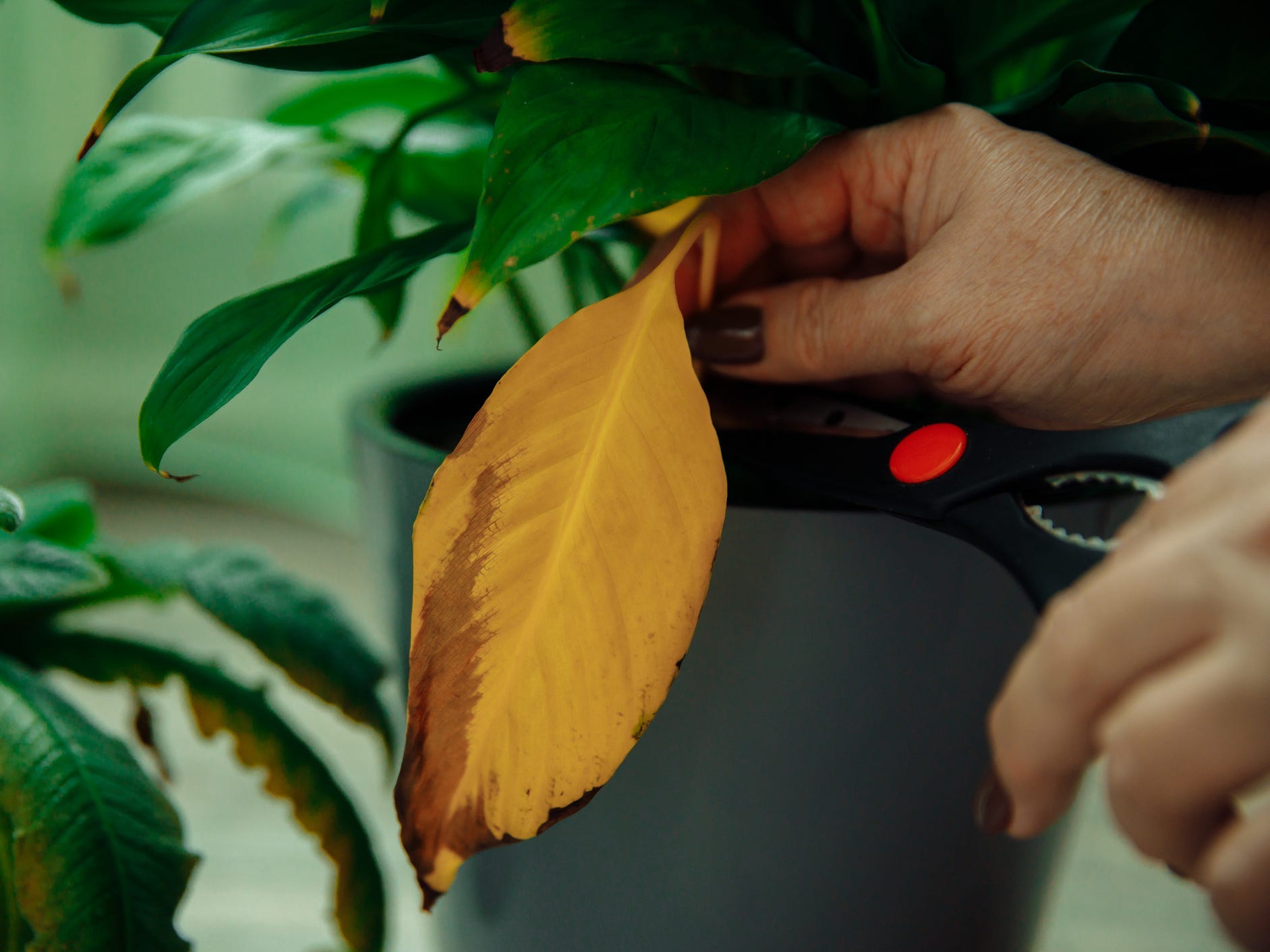
Pruning is the practice of removing or trimming dead or dying foliage to promote new growth. To prune your anthurium, Marino suggests snipping off dead foliage using pruning shears at the base of the plant, or where the stem meets the potting mix.
Propagation
Propagating anthuriums can be a way to grow your blooming plant collection or gift to plant-loving friends. To propagate it, Marino recommends using a cutting from a healthy, mature plant.
"First, with clean pruners, cut off a healthy section of the stem that has multiple leaf nodes towards the bottom of the cutting. These nodes are where new roots will begin," says Marino. "Dip the bottom of the cutting in root hormone and stick it into a fresh, pre-moistened potting mix. Pat down around the base to secure the plant."
Keep your new anthurium in a warm spot, with indirect bright to medium light, and water when the soil has dried out.
Insider's takeaway
Anthuriums are the perfect houseplant to bring a tropical touch of color and vibrancy into the home. With a proper care routine that includes well-draining soil, a weekly watering, high humidity, and bright, indirect light, your anthurium can stay healthy and in bloom.
